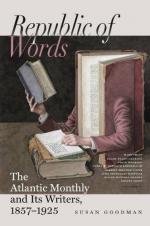It would be too long to detail the processes of cigar- and snuff-making, the latter of which is quite complicated.
We were happy to learn from the fearful work of Hassall on “Food and its Adulterations,” that tobacco was one of the articles least tampered with; and particularly that there was no opium in cheroots, but nothing more harmful than hay and paper. He ascribes this immunity mainly to the vigilance of the excisemen. But we have recently seen a work on the adulteration of tobacco, whose microscopic plates brought back our former misgivings. Molasses is a very common agent used to give color and render it toothsome. Various vegetable leaves, as the rhubarb, beech, walnut, and mullein, as well as the less delectable bran, yellow ochre, and hellebore, in snuff, are also sometimes used to defraud. Saltpetre is often sprinkled on, in making cigars, to improve their burning.
The Indians mixed tobacco in their pipes with fragrant herbs. Cascarilla bark is a favorite with some smokers; it is a simple aromatic and tonic, but, when smoked, is said sometimes to occasion vertigo and intoxication.
We have before observed that tobacco is a very exhausting crop to the soil. The worn-out tobacco-plantations of the South are sufficient practical proof of this, while it is also readily explained by chemistry. The leaves of tobacco are among the richest in incombustible ash, yielding, when burned, from 19 to 28 per cent. of inorganic substance. This forms the abundant ashes of tobacco-pipes and of cigars. All this has been derived from the soil where it was raised, and it is of a nature very necessary to vegetation, and not very abundant in the most fertile lands. “Every ton of dried tobacco-leaves carries off from four to five hundred-weight of this mineral matter,—as much as is contained in fourteen tons of the grain of wheat.” It follows that scientific agriculture can alone restore this waste to the tobacco-plantation.




